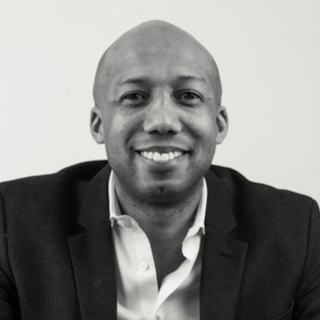Diversity’s false dawn in advertising cannot be repeated
DE&I’s progress in adland is stalling. Conrad Persons, president of Grey London, asks, did we see a false dawn after the George Floyd awakening?

As advertisers, what is our greatest power? There are a million potential answers, but for me, the most potent one has always been simple: change.
Changing narratives, conversations, and the commercial fortunes of our clients - and forging another kind of change - the ability to change how we see others and how we see ourselves. The bully pulpit of advertising still works - for better and for worse (like FMCG ads portraying women as queens of domesticity).
By this definition, our superpower is failing us in one significant way: genuine engagement on diversity. As an American who cut his teeth in New York before founding an agency in London, I’ve seen this issue play out in both places. In the UK, we’re constantly convinced that there’s always something a little better, a little bigger happening on the other side of the pond. Not so in DE&I.
Advertisement
I’d argue that in the US, more energy is consumed by virtue-signaling, grand gestures, and cultural games of ‘gotcha’ - than progress itself. And here in the UK, there is awareness, but not the kettle-hot sense of urgency that is the prerequisite for any real change. In both places, if the industry looks less and less like the public it seeks to serve, eventually, we will be able to reach less and less of the public.
While the marketing industry is renowned for being adaptive, DE&I progress has been sluggish. The annual diversity report by the US Association of National Advertisers showed a 3% increase in diversity among employees from 2018 - 2022. During this period, I would have expected more because the summer of 2020 saw us tragically lose the life of George Floyd but gain an opportunity to move the needle on diversity.
Advertisement
Subtle signals of progress arose. DE&I job postings increased by 123%, more people Googled racial justice than ever before. CEOs cried mea culpa almost daily.
But it was a false dawn.
The conversation changed briefly, and outcomes didn’t
We then had a choppy economy. As cheap money vanished - so did the momentum behind inclusivity. A LinkedIn report studying more than 500,000 C-suite hirings between 2019 and 2022 found that despite a 169% growth in hires for chief diversity and inclusion officers in the past four years, the role experienced a 4.5% decline in 2022. Articles about ‘defunding’ DEI began to pop up, and DEI seemed at risk of becoming a political football – much as ESG investing has in the US.
As enthusiasm wanes, we are on the verge of making a mistake of historical magnitude. Firstly, like building brands, DEI is a long-term investment. Progress is fragile, and short-term measures cannot accommodate for the lack of long-term commitment.
Suggested newsletters for you
Secondly, Covid-19 taught us what a few years of neglect can do to a talent pool. When programs go on hold - for recruiting diverse talent or upskilling graduates - it creates a ripple effect that impacts cohorts for years.
Lastly, our industry urgently needs to grow more diverse, not just as a moral imperative but for the sake of our commercial survival. The Consumer Equality Equation is the UK’s most comprehensive study of ethnicity and consumer experience. It showed that if just 1% of minority ethnic consumers in the UK changed their purchase habits during this current cost of living crisis, the growth opportunity would add up to £2.34bn for brands in 2023, rising to £12.3bn in 2031. No business in the UK or the US can afford not to engage with these groups, and good luck doing so without a diverse talent base.
Here are three concrete changes I’d ask fellow agency leaders to make in order to finally (belatedly) build more diversity into our industry.
1. Build a business case
It’s not just activist investors who are questioning inclusivity. Selling inclusivity can’t be based purely on being a good deed; it also has to be good business. If your business is serious about getting its leadership, clients, and people to embrace DE&I, be prepared to have a business case that allows you to talk about inclusivity as an opportunity - not only a societal problem. Sometimes that will mean crystallizing the opportunity cost of inaction. Sometimes, that’s putting a dollar amount next to the opportunity itself.
2. Create a charter with teeth
In 2022, before I joined Grey, the business invited all its clients and suppliers to sign up to a charter it developed to ensure greater equity, inclusion and representation across their organizations. The charter is already included in many of Grey’s client agreements. By declaring both parties’ joint commitment to at every stage of a piece of work, it promises to fundamentally change the way advertising is conceived and created, having a huge impact on audiences across the world. Don’t do a charter if it’s a series of softball commitments that will languish in a drawer. Give it teeth.
3. Don’t go alone - use partnerships to scale the good
There is a tendency to do it alone. But some of the most impactful initiatives are the result of partnerships - sometimes with allies, sometimes with competitors. The Unstereotype Alliance - which seeks to end harmful stereotypes in advertising - is a considerably stronger body for having both Google and Meta, both WPP and Publicis - as members.
The time for change is now. So that in 2024, a kid who looks like me won’t walk into his first job in New York and experience what I did: being the only Black man on the floor. So that we close the ‘say, do’ gap - and trade big announcements for the quiet magnitude of meaningful results.
So that this industry - which endlessly justifies its fees - can help clients grow by opening up vast new audiences. This change will not start with a press release, a pep talk, or an article - it will start with charters, commitments, measurable promises, better recruitment, partnering with frenemies, and the unsexy but essential world of KPIs.
The window is closing. If we don’t act soon - our greatest superpower, that of change, will atrophy, and the window of opportunity will close.

